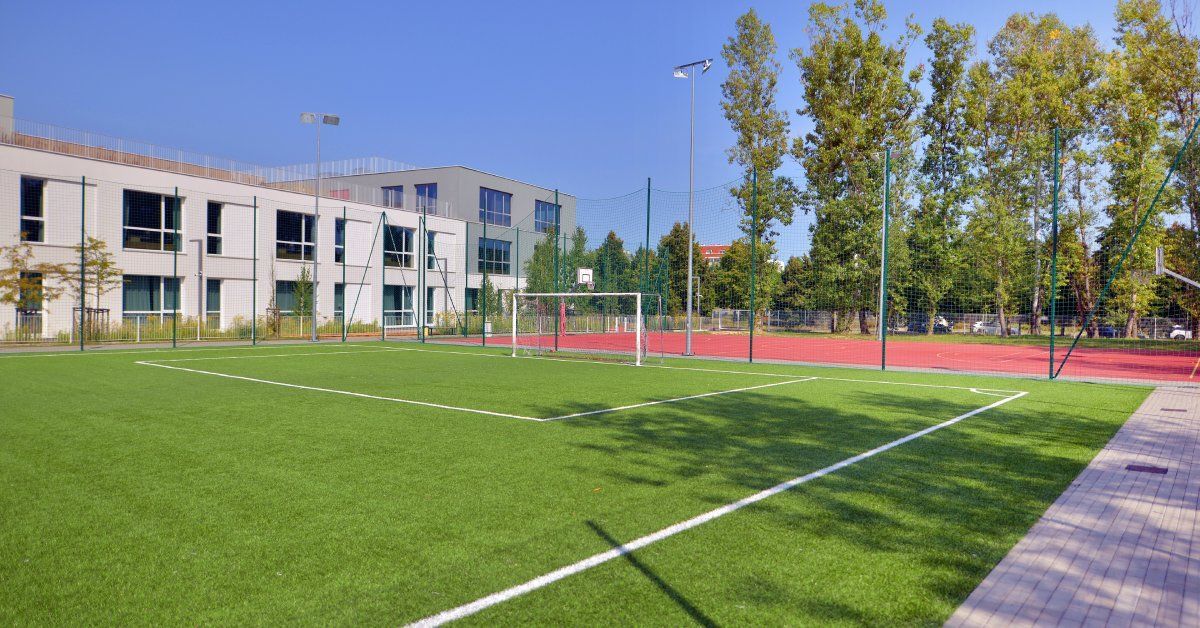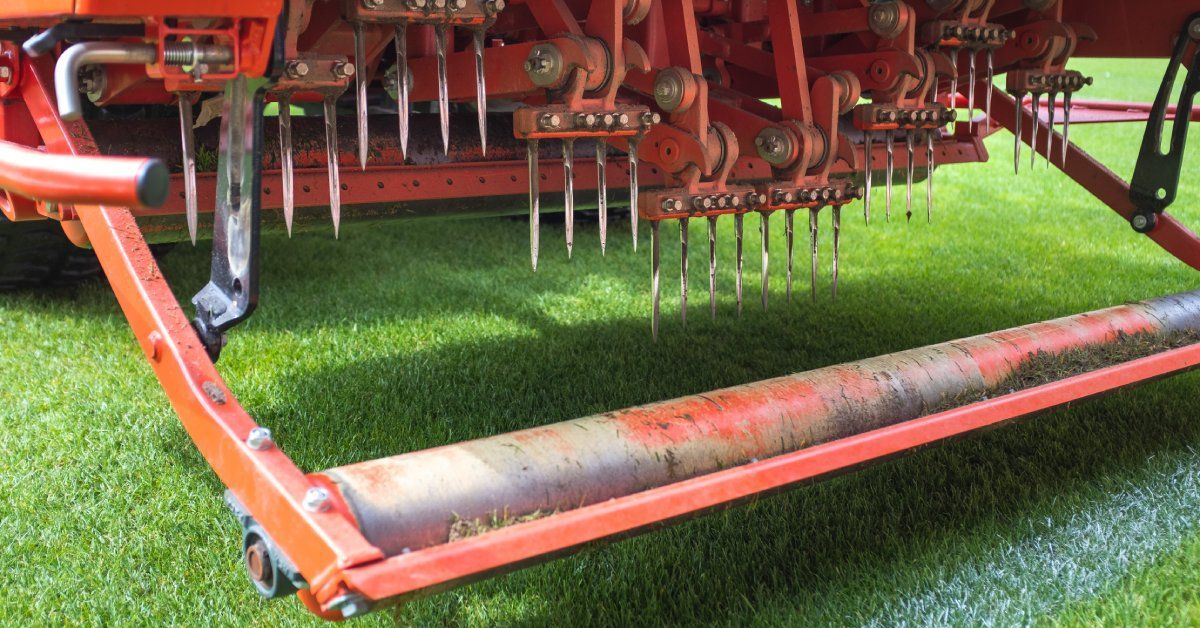10 Top Solutions for High-Traffic Turf Areas

High-traffic turf areas, such as commercial lawns, sports fields, and public parks, face unique challenges. Constant foot traffic, soil compaction, and wear and tear can degrade even the most well-maintained turf. For commercial property owners and landscapers, maintaining vibrant, healthy turf in these spaces is no small task.
However, with the right strategies, it’s entirely possible to create lush, durable turf that enhances the appearance and functionality of high-traffic areas. Eager to get started? This guide explores ten proven solutions for high-traffic turf areas , designed to tackle the challenges and improve the aesthetics and longevity.
1. Select Durable Turfgrass Varieties
Choosing the right turfgrass variety is the foundation of maintaining high-traffic areas. Consider grass specifically bred for durability and wear tolerance. Kentucky bluegrass and perennial ryegrass are excellent options for cool-season regions, while Bermuda grass and zoysia grass thrive in warmer climates. These varieties are better equipped to recover from damage and will withstand heavy foot traffic without thinning.
Additionally, commercial landscapers often recommend blending multiple grass species for increased resilience. A well-balanced mix provides the benefits of each variety and ensures your turf can handle climate challenges and increased demand.
2. Address Soil Compaction Issues
High-traffic areas often experience significant soil compaction, which severely influence turf health. Compacted soil inhibits airflow, water drainage, and root growth, leading to weak and patchy grass. Proactivity, such as aeration and topdressing, are effective strategies to manage this.
Aeration involves perforating the soil with small holes to allow air, water, and nutrients to penetrate deeper into the root zone, effectively loosening compacted areas. Following up with topdressing—a process where a thin layer of soil or sand is applied—further enhances soil structure and health.
Proper soil management lays the groundwork for a long-lasting, vibrant turf that withstands daily wear.
3. Solve Drainage Issues
High foot traffic and poor drainage leads to water pooling, muddy patches, and grass disease. Effective drainage is critical for maintaining healthy turf. Installing French drains, catch basins, or grading the landscape to direct water away from the surface prevents such issues.
Professional commercial landscape maintenance teams can assess and install appropriate drainage systems tailored to your specific site. Addressing drainage early ensures your turf remains dry, functional, and less susceptible to damage, even during heavy rains.
4. Establish a Regular Aeration Schedule
Aeration should be part of a regular lawn care regimen. Scheduling aeration on a biannual or annual basis keeps high-traffic areas in peak condition. By consistently breaking up compacted soil and improving nutrient absorption, your turfgrass system remains strong and resilient against heavy wear.
The benefits are undeniable. With better root development and healthier growth, your turf will repair itself quickly, even after the most demanding events or activities.
5. Implement a Consistent Watering Schedule
Consistency is key when it comes to watering high-traffic turf areas. Overwatering will lead to soggy, weak grass, while underwatering will cause stress and thinning. Implementing an irrigation system that delivers a precise amount of water based on your turf’s needs ensures optimal soil moisture without excess.
Smart irrigation systems, equipped with weather sensors, can adjust watering schedules automatically based on conditions, making them highly effective for commercial properties. These systems maintain healthy growth while reducing water usage, ultimately supporting sustainability goals.

6. Promote Growth With Balanced Fertilization
Nutrient-rich soil is fundamental to turf resilience, especially in high-impact areas. Fertilization provides essential nutrients, such as nitrogen, phosphorus, and potassium, that your turfgrass needs to thrive.
For high-traffic turf, slow-release fertilizers are ideal as they provide a steady supply of nutrients over time. Conducting soil tests to determine nutrient deficiencies allows for tailored applications that support consistent growth. By maintaining a balanced fertilization plan, you make sure your turf is strong enough to withstand wear and tear.
7. Adopt Integrated Pest Management Strategies
Pest infestations quickly exacerbate damage in high-traffic turf areas. Integrated Pest Management (IPM) emphasizes sustainable, targeted control measures to minimize pest activity without harming the environment.
Start by regularly monitoring your turf for signs of pests, such as grubs, chinch bugs, or armyworms. Introducing beneficial predators, applying organic treatments, and maintaining healthy soil are all effective components of an IPM approach. With a proactive plan in place, you can minimize pest damage and keep your turf happy and healthy.
8. Reinforce With Turf Protection Products
For areas experiencing repeated heavy use, consider incorporating reinforcement products like turf reinforcement mats (TRMs). These products act as a protective layer by shielding grass from wear and allowing it to establish stronger roots.
TRMs are particularly valuable for sections of turf near playgrounds, stadiums, or pathways. They work seamlessly with natural turf and ensure durability while preserving aesthetics. Using these products reduces the need for constant repairs and creates a more resilient landscape.
9. Plan and Establish Traffic Patterns
Directing foot traffic is one of the simplest yet most effective solutions to reduce wear and tear on high-traffic turf areas . By designing and establishing clear traffic patterns, you will minimize the risk of concentrated damage.
Use walkways, marked paths, and signage to guide visitors away from fragile areas. For frequently used zones, alternate the designated walking routes periodically to distribute pressure evenly across the turf. Strategic planning goes a long way in preserving your lawn’s integrity.

10. Invest in Commercial Landscape Maintenance
While adopting the above practices is essential, partnering with professional commercial landscape maintenance services ensures top-tier care for your turf year-round. Experienced landscapers bring technical expertise, advanced tools, and tailored solutions to tackle the unique challenges of high-traffic turf areas.
From regular aeration and fertilization to precise irrigation system management, professional services deliver consistent results while saving you time and effort. Their proactive approach keeps your turf healthy, vibrant, and safe for visitors, enhancing the overall value of your commercial property.
Maintain High-Traffic Turf Areas With Confidence
Managing high-traffic turf doesn’t have to be overwhelming. By integrating durable turfgrass, addressing soil health, optimizing drainage, and fostering growth with tailored care strategies, you will create a lush and resilient lawn. Reinforce these efforts with traffic management plans, modern tools, and expert maintenance to secure long-term success.
It’s time to elevate your turf game. Implement these proven solutions and set your high-traffic areas apart for their quality and vitality. Partner with Allstate Landscaping for professional assistance and give your turf the care it deserves.
